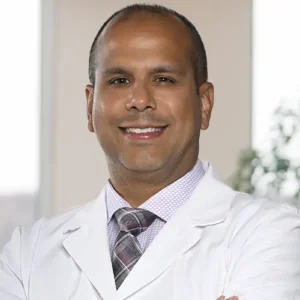Peripheral Artery Disease – Don’t ignore poor circulation
No matter where it happens in your body, poor circulation can be a serious problem. A prime example: peripheral artery disease (PAD).

“PAD happens when arteries to the legs (and sometimes the abdomen, arms or head) become narrowed or clogged with cholesterol and fat,” says Syed Hussain, MD, Riverside vascular and endovascular surgery specialist. “This prevents enough vital blood from reaching the legs and feet.”
The result can be cramps in your calf muscle when you walk that go away when you rest. Other potential signs of PAD include slow-healing leg or foot sores, poor hair growth on your legs, poor toenail growth, and having a foot that feels cold to the touch.
You’re more likely to get PAD the older you get and if you:
- Smoke.
- Have diabetes, high blood pressure or high cholesterol.
- Are overweight.
- Don’t get much exercise.
Why PAD is bad
Pain isn’t the only possible complication of poor circulation. PAD can be a warning that other arteries in the body are narrowed, possibly including those that supply blood to the heart and brain. For this reason, people with PAD have a higher risk for heart attack and stroke.
In addition, a severe lack of circulation to the legs can lead to gangrene and loss of a leg.
Get checked
“If you think you might have PAD, see your primary care provider,” Dr. Hussain says. “They may refer you to Riverside Vascular and Endovascular Surgical Specialists to use a special blood pressure test and possibly ultrasound and other tests to check the circulation in your legs.”
If you do have PAD, these healthy changes can help you manage it:
- Eat foods low in artery-clogging saturated and trans fats.
- If you smoke, do your best to quit.
- Exercise regularly. Even if walking is painful at first, an exercise program where you gradually increase your activity can help decrease that pain.
Medicines may also be needed to help control PAD or prevent blood clots. If these treatments aren’t enough, you might need surgery to improve blood flow to your legs.
The help you need
Riverside Heart and Vascular Institute has the expert providers and top technology to care for a wide range of conditions. Find out more about the institute on our website.
